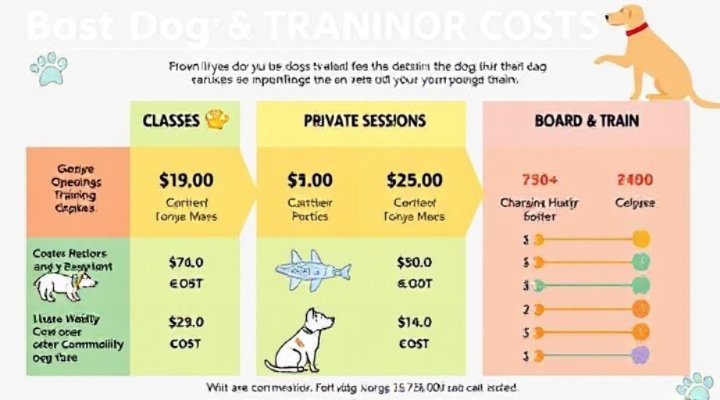When considering dog training cost, it’s important to understand that prices can vary significantly depending on the type of training, location, and your dog’s specific needs. Above all, investing in proper training leads to a happier, better-behaved companion. Meanwhile, let’s break down the different options available.

Understanding Different Types of Dog Training Programs
Firstly, group classes are typically the most affordable option, ranging from $50 to $125 for a 4-6 week session. For example, our dog training courses online offer excellent value for basic obedience training. Similarly, local community centers often provide budget-friendly options.
On the other hand, private training sessions offer personalized attention but come at a higher dog training cost, usually between $50 to $150 per hour. Most importantly, these are ideal for addressing specific behavioral issues or for busy schedules.

Board and Train Programs: Convenience vs. Cost
For those needing intensive training, board and train programs provide full immersion but represent the highest dog training expense, typically $500 to $1,250 per week. Consequently, these are best reserved for serious behavioral issues or when owners have limited time. Our article on dog training boot camps explores this option in detail.
Meanwhile, online training courses have emerged as a cost-effective alternative, often costing between $30 to $300 for comprehensive programs. That is to say, technology has made quality training more accessible than ever before.

Factors Affecting Dog Training Prices
Several elements influence dog training costs. Firstly, the trainer’s experience and certifications significantly impact pricing. Similarly, geographic location plays a role – urban areas typically command higher rates than rural locations.
Furthermore, your dog’s age and behavior affect pricing. Puppies generally cost less to train than adult dogs with established bad habits. For instance, our guide on puppy training shows how early training can save money long-term.
The training duration and frequency also determine overall costs. In other words, more sessions mean higher expenses but often better results. Therefore, it’s crucial to balance budget with your dog’s needs.

Budgeting Tips for Dog Training
To manage dog training expenses effectively, consider these strategies. Firstly, prioritize essential training first, then add advanced skills later. Similarly, look for package deals or group discounts that many trainers offer.
Additionally, some pet stores offer free or low-cost introductory classes. For example, check out our article on Petco training classes for budget-friendly options.
Most importantly, remember that investing in proper training now can prevent costly behavior problems later. In the same vein, well-trained dogs often have lower veterinary costs due to reduced accident risks.

Making the Right Choice for Your Budget
When evaluating dog training costs, consider your dog’s personality and learning style. For social dogs, group classes provide training plus socialization at lower costs. Conversely, shy or reactive dogs might benefit more from private sessions.
Similarly, assess your own schedule and commitment level. While cheaper options exist, they often require more owner involvement. Therefore, be honest about the time you can dedicate to training.
Finally, don’t hesitate to interview multiple trainers and compare programs. Many offer free consultations, allowing you to find the best value for your dog training budget.
Related keywords: dog training prices, affordable dog training, cost of dog obedience training, puppy training costs, professional dog training fees
